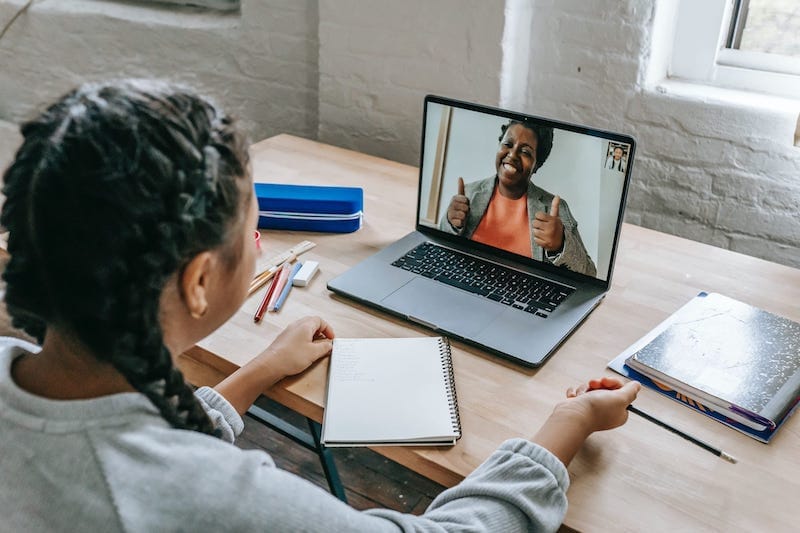What is a User Research Interview?
A User Research Interview takes place by asking your user questions about a topic of interest, in real time, with a desired goal in mind.
When done right, the results from these interviews allow you and your team to be confident that the problems you are addressing are real problems for the user, or that the solutions you are proposing will solve their problems. They can also be a great way to get to know your users and fuel for your personas.
User interviews can be cheap, easy to conduct, and can yield a lot of insightful takeaways, however, if you want to conduct an interview properly, there can be a lot of prep work involved. Analyzing each interview can be another lengthy process, but the results are well worth it.

What do you need for a User Research Interview?
TIME
MATERIALS
How do you conduct a User Research Interview?

Step 1: Solidify your goals
You need to create and lock down goals because they will help focus your questions. An example of a goal could be “To better understand the hardest part of the participant’s daily routine”. With a goal like that, you can now focus your questions around it.
Once done, make sure to review these goals with your stakeholders.
Step 2: Lock down your target audience
You will want to specify your target audience too. For example, you may want to only know this about females between the ages of 21 and 35, who live in Canada. This will focus your recruiting later on.
Step 3: Generate a list of questions
This is where you can bring in your stakeholders and other members of your team for a fun URQBS (User Research Question Brainstorm Session, pronounced erk-you-biss). The point of a URQBS is to come up with a list of questions that you and your team want answered. Doing this together helps generate more questions, and also gets others invested in the project right from the start.
Once your brainstorming session is over, it’s up to you to clean up and prioritize the list of questions. Make sure each question is tied to one of your goals, otherwise there is no point in asking it at this time. You may also want to review the finalized list of questions with your stakeholders.
Step 4: Create the script
Now you’re going to want to create your interview script. Having a script makes sure you don’t forget to mention or do anything required for the interview to be as successful as possible. For example, the script should contain an overview of why you are conducting research and on what, it should prompt you to ask the participant if you may record the conversation, and much more.
Steve Krugg has a good script here (pdf), and here is my research script template (pdf) I use for research interviews, which was adapted from his script.
Step 5: Recruit and Schedule
Now that you have done all the planning, it’s time to recruit participants. Your first step is to decide on the number of people to interview. I recommend between 5-12, as this will allow you to start seeing some patterns in the responses and takeaways.
Recruiting can be done in several ways, such as:
- Mass recruitment surveys
- Personal emails
- Have your customer support team help recruit participants
- Recruit at events that your target audience will be at
Get creative here! Do what it takes to get people to chat with you and who represent your target audience and schedule them appropriately. I try to limit my day to 2 hours of interviews a day. Interviews can be draining and you still need a lot of time to compile and analyze.
Step 6: Setup
When setting up for your interviews, make sure you test your technology beforehand. You may even want to do a practice interview first.
When listening to their answers, it’s important to prioritize their actions in the tasks, rather than what they said in their responses. For example, they may tell you that they found the task easy, but in reality, they may have struggled for a long while at various points in the task.
Step 7: Conduct the interview
Now you’re ready to interview your participant. When the participant joins the interview, take a few minutes to exchange pleasantries and get to know them a little. It will make both of you feel more comfortable.
Now, just need to stick to the script and questions you’ve spent so much time preparing. Make sure to record the session, take notes or have someone take notes for you, and mark the questions that don’t land well so you can adjust them before the next interview.
When they are speaking, practice active listening, remain neutral in your responses, and let them finish their thoughts. This may seem difficult to do at first, but conducting an interview is a bit of an art, and it gets easier with experience. Just keep at it. I believe in you!
Step 8: Debrief
Once the interview is over and the participant is no longer around, now is a good time to debrief with anyone else that was there for the interview.
Go through the responses, discuss anything that was interpreted differently, agree on the takeaways from each response, and agree on a summary. You should also include things you want to change for the next interview.
Step 9: Compile and Analyze
There are many ways to compile, so pick the method that works for you, your timeframe, and the level of detail required. The end goal is to have a list of key takeaways that relate to your goals. These will be cross referenced with the takeaways from the rest of your interviews.
Step 10: Adjust and Repeat
If you found that some questions weren’t fruitful or you ran out of time, you may want to adjust your list of questions. After that, repeat the interview process and analysis until you are done with all of your interviews.
Finally, share the key takeaways with your stakeholders, team, and anyone else that was part of the URQBS in step 3.
Tips for a great User Research Interview
